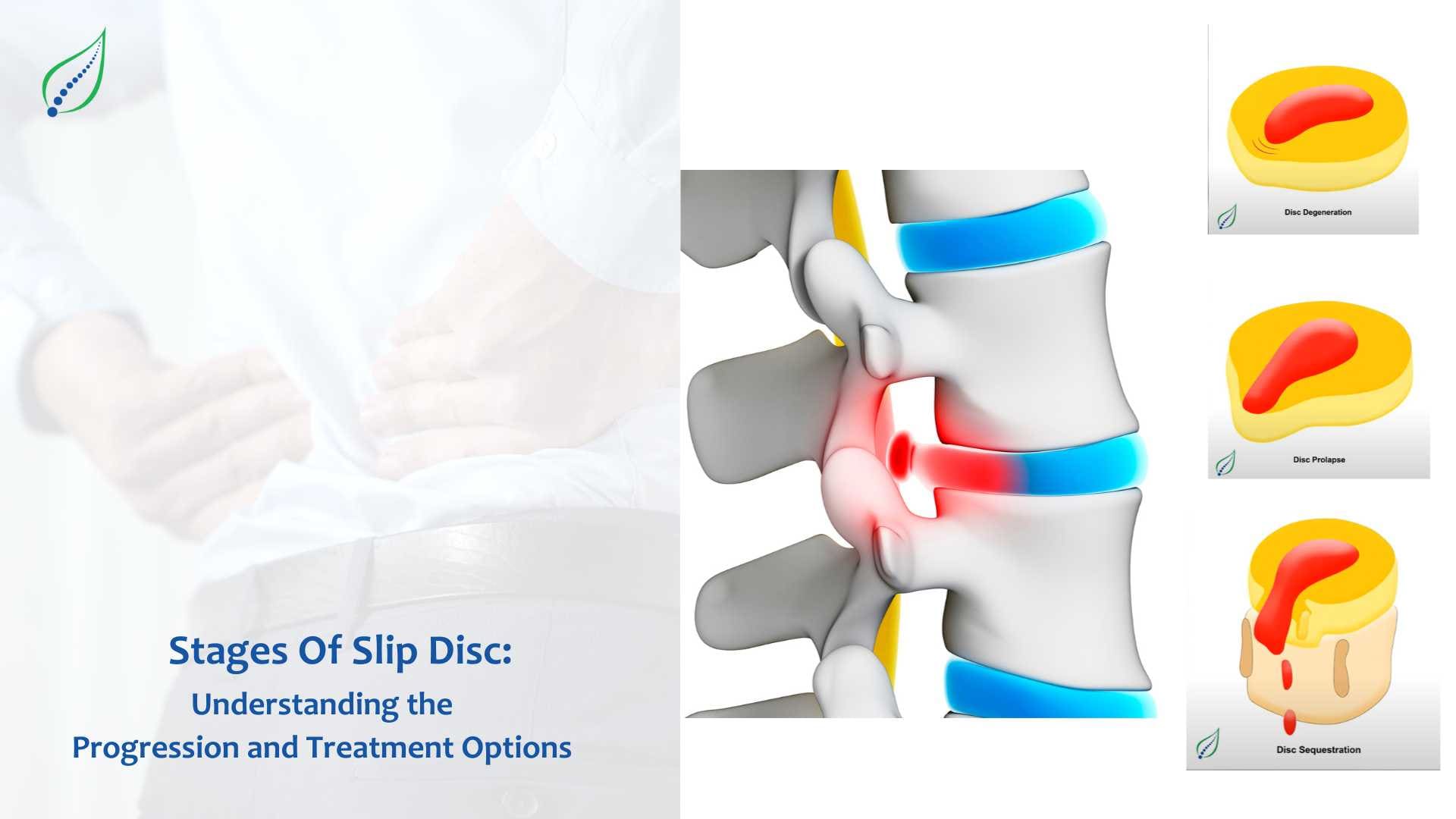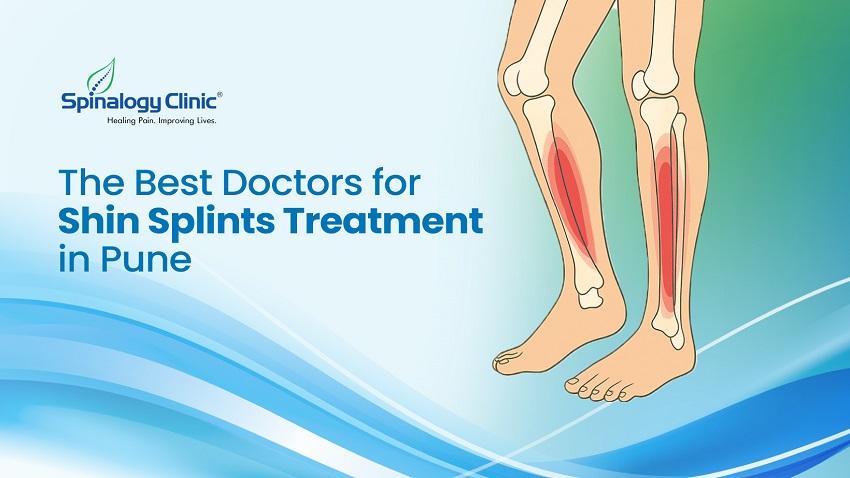Stages Of Slip Disc: Understanding the Progression and Treatment Options
Introduction: Slip disc, is a common condition that affects the spinal discs. These discs act as cushions between the vertebrae, providing shock absorption and flexibility to the spine. When a disc herniates, the gel-like substance inside the disc protrudes through the outer layer, causing pain and discomfort.
In this blog, we will explore the four stages of slip disc and the available treatment options.
Stage 1: Disc Compression (Annular Tear)
The first stage of slip disc is disc compression. This stage occurs when excessive strain, trauma, or degenerative changes cause the disc to become squashed or compressed. The annular fibers that hold the disc in place begin to tear, but the nucleus (the jelly-like center of the disc) remains contained within the disc structure. At this stage, individuals may not experience any symptoms, as the nucleus has not yet pushed through the outer layer.

Stage 2: Bulging Disc
As the strain on the disc continues, the nucleus begins to push against the weakened annular fibers, causing the disc to bulge outward. This stage is known as a bulging disc. The nucleus is still contained within the annulus, but the outermost fibers are holding it in place. Inflammation caused by the bulging disc can irritate the nearby spinal nerve, leading to pain and discomfort.

Stage 3: Disc Protrusion
In the third stage, called disc protrusion, the soft nucleus escapes through larger tears in the annular fibers but remains connected to the disc. The protruding disc presses on the exiting spinal nerve, causing an increase in pain and other symptoms such as numbness, burning, or tingling sensations in the affected area. The severity of symptoms may vary depending on the location and extent of the protrusion.

Stage 4: Herniated Disc
The final and most severe stage is a herniated or sequestrated disc. In this stage, fragments from both the annulus and nucleus break through the posterior longitudinal ligament into the epidural space. These fragments are now outside the disc segment, compressing the spinal nerve. Pain levels at this stage are often severe, and intervention may be necessary to alleviate the symptoms and prevent further damage.
Treatment Options
- Transforaminal Epidural Injections: - The most common spinal injection is the epidural injection. The transfopraminal epidural injection contains a small dose of anti-inflammatory medication and at times therapeutic steroids to relieve pain. This help in control local inflammation by removing chemicals from the local area that may contribute to and exacerbate pain.
- Physical Therapy - Physical therapy can be beneficial in managing the symptoms of a slip disc. A trained physical therapist can guide patients through exercises and stretches designed to strengthen the core muscles, improve flexibility, and reduce pain. They may also employ techniques such as heat therapy, cold therapy, or electrical stimulation to alleviate discomfort.
- Medications - Over-the-counter pain relievers, such as ibuprofen or acetaminophen, can help manage mild to moderate pain associated with a slip disc. In more severe cases, prescription medications like muscle relaxants or nerve pain medications may be prescribed by a healthcare provider to control symptoms.
- Lifestyle Modifications - Making lifestyle changes can play a significant role in preventing and managing slip disc. Maintaining a healthy weight, practicing good posture, and engaging in regular exercise can help reduce the strain on the spinal discs. Avoiding activities that involve heavy lifting or sudden twisting motions can also minimize the risk of disc herniation.
Conclusion:
Understanding the stages of slip disc and the available treatment options is crucial for managing this condition effectively. From disc compression to a fully herniated disc, each stage presents its own set of symptoms and challenges.
If you suspect you have a slip disc, it is essential to consult with a healthcare professional to receive an accurate diagnosis and develop an individualized treatment plan. With proper care and management, it is possible to alleviate the pain and discomfort associated with a slip disc and improve overall quality of life.




